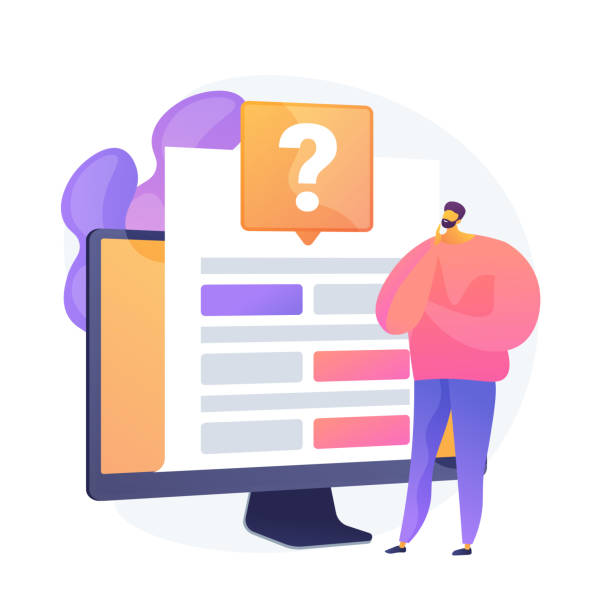Introduction to Personal Website Design: Why Do You Need It?
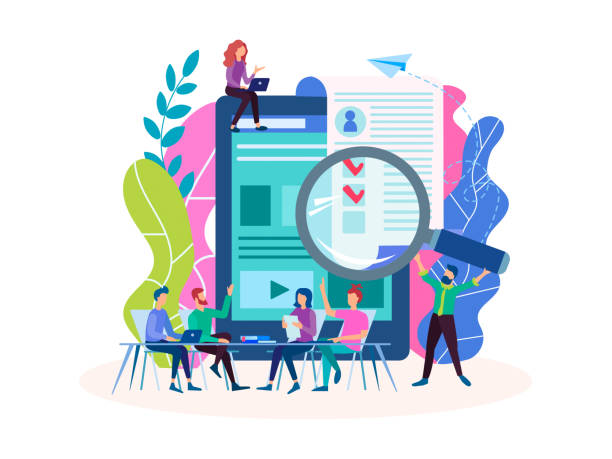
In today’s world, where digitalization takes precedence, having a powerful #online presence is no longer an option, but a necessity. #Personal website design allows you to build your unique digital identity, showcase your skills, and strengthen your personal brand.
This dedicated platform is a space where you can tell your story, present your portfolio, and directly connect with your audience.
Unlike social networks that have their own rules and limitations, a personal website is entirely under your control, and you can publish any content you want with your preferred style and layout.
The purpose of this introductory chapter is to clarify the importance and position of a personal website in the current era.
Many people mistakenly believe that a social media presence is sufficient, but a personal website proves your credibility and professionalism far more, acting as your permanent digital portfolio.
With personal website design, you create a central hub for all your online activities; from blogging and knowledge sharing to selling products and services.
This digital independence not only helps you have full control over your information but also builds greater trust and confidence among your audience and potential employers.
Dissatisfied with low sales from your online store?
Rasawb is your solution for having a professional and high-selling online store.
✅ Significant increase in sales and revenue
✅ Easy and enjoyable shopping experience for customers
⚡ Get a free consultation from Rasawb right now!
Benefits of Having a Personal Website: Beyond a Simple Resume
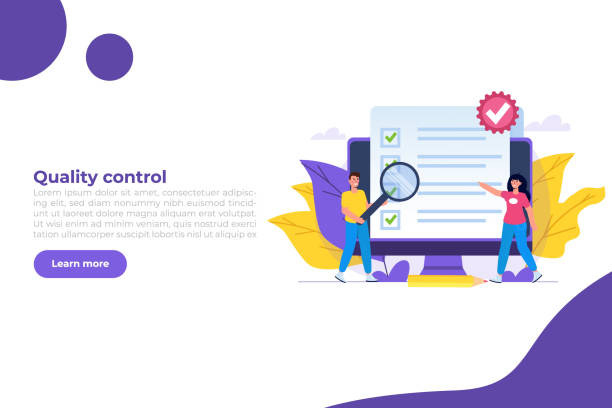
#Personal website design goes beyond creating an online resume; it is a powerful #tool for #personal branding and creating new opportunities.
In this analytical chapter, we delve into the key benefits of a personal website.
One of the most important advantages is establishing credibility and professionalism.
When you have a dedicated website, you show that you are serious about your work and value presenting information in an organized manner.
This is especially crucial for freelancers, artists, consultants, and specialists looking to attract clients or new collaborations.
Secondly, a personal website allows you to have #complete control over your narrative.
On social media, algorithms and platform policies can affect the visibility of your content, but on your website, you determine what is displayed, how it is displayed, and who sees it.
This platform enables you to showcase your skills, experiences, and achievements in a more comprehensive and visual way than a paper resume or a LinkedIn profile.
Your personal branding through your website will be stronger and more lasting, as it provides a permanent space to reflect your personality and expertise.
Furthermore, this website can serve as a powerful marketing tool, helping you attract more audiences through #SEO and content marketing.
This analytical approach shows that a personal website is a long-term investment in your professional future.
Key Components of a Successful Personal Website: Content, Design, and User Experience

For a successful #personal website design, merely having an online presence is not enough; you must pay attention to #key components that attract visitors and provide them with an unforgettable experience.
This instructional chapter focuses on three main pillars: content, design, and user experience (UX).
Content is #King: Your website’s content must be engaging, relevant, and high-quality.
Whether you are a blogger, showcasing an artistic portfolio, or offering consulting services, your content must provide added value to the audience.
This includes articles, images, videos, case studies, and client testimonials.
Continuously update your content to encourage visitors to return.
Attractive and Professional Visual Design: Your website’s design must #reflect your personal brand.
Use a harmonious color scheme, readable fonts, and high-quality images.
The layout should be #clear and #organized so that visitors can easily find what they are looking for.
#Responsive design for proper display on all devices, including mobile phones and tablets, is crucial.
Smooth and Hassle-Free User Experience (UX): A good user experience means easy navigation, fast loading times, and simple access to information.
Visitors should not have to struggle to find what they are looking for.
Contact forms should be simple and efficient, and Call-to-Action buttons should be clearly visible.
Adhering to these three principles in building your personal website will greatly help ensure its success and attract more audiences.
| Feature | Positive Example | Negative Example |
|---|---|---|
| Content | Specialized and in-depth articles, high-quality portfolios | Short and worthless texts, low-quality photos |
| Design | Responsive design, harmonious color usage, attractive visual layout | Outdated design, no mobile compatibility, visual clutter |
| User Experience | Easy navigation, high loading speed, user-friendly contact form | Broken links, slow loading speed, complexity in finding information |
| Call-to-Action | Clear “Contact Us” or “Portfolio” buttons | Absence of call-to-action buttons, hidden buttons |
Choosing the Right Platform for Personal Website Design: WordPress or Other Options?
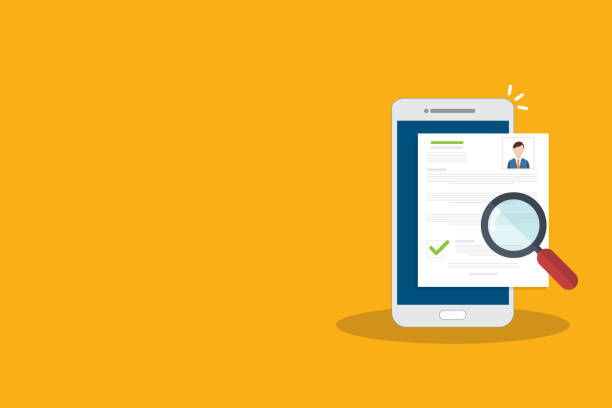
In the process of #personal website design, one of the first and most important decisions is choosing the #right platform to build the website.
This guide chapter helps you get acquainted with the available options and make the best choice based on your needs and budget.
WordPress is undoubtedly the most popular Content Management System (CMS) in the world, with over 40% of websites using it.
Reasons for this popularity include #high flexibility, thousands of free and paid plugins and themes, a large user community for support, and ease of use even for beginners.
If you are looking for a website with extensive capabilities, strong #SEO potential, and full control, WordPress is an ideal choice.
However, it requires #hosting and a domain, and some technical knowledge for initial setup.
Other options include Drag-and-Drop website builders like #Wix, #Squarespace, and #Weebly.
These platforms are excellent for individuals who lack technical knowledge and are looking for a quick and easy setup.
They offer pre-designed templates and visual tools for website building, but they usually have limitations in #flexibility and customization capabilities.
For developers and individuals who prefer full control and optimal performance, #coding from scratch using HTML, CSS, and JavaScript, or using frameworks like React or Vue.js, can be a suitable option.
This approach requires specialized knowledge but provides #infinite possibilities.
Your choice depends on your technical skills, budget, and goals for personal website development.
The important thing is to choose a platform that allows you to implement your ideas in the best possible way.
Did you know that 85% of customers check your company’s website before any interaction?
With Rasawb, build a corporate website worthy of your credibility.
✅ Increase credibility and customer trust
✅ Attract high-quality leads
⚡ Get a free website design consultation!
Content Strategy for a Personal Website: How to Tell Your Story?

One of the most important parts of #personal website design is developing a comprehensive #content strategy.
This specialized chapter shows you how to tell your story effectively and engagingly so that your audience gets to know you, trusts you, and ultimately interacts with you.
Your personal website content should reflect your identity, expertise, and goals.
First, define your website’s #purpose.
Are you looking to attract clients? Do you want to showcase your artistic portfolio? Or do you intend to share your knowledge through a specialized blog? Defining the purpose determines the type and tone of the content.
For example, an artist needs high-quality images and brief descriptions, while a consultant might need in-depth articles, case studies, and client testimonials.
The type of content is also very important.
You can use a combination of #blogging (educational, analytical articles, or personal opinions), #portfolio (showcased works, projects, and achievements), #about me section (personal introduction and your professional story), and #contact pages (ways to communicate).
For each content type, consider your target audience and produce content that answers their questions and meets their needs.
A #content calendar is also an excellent tool for planning regular content publication.
With #regular planning, you can ensure that your website remains up-to-date and engaging.
Additionally, #content marketing through social media and email can help #increase your website’s visitors.
By using these content strategies in launching your personal website, you can become a powerful platform for connecting with the world.
Search Engine Optimization (SEO) for a Personal Website: How to Get Seen?
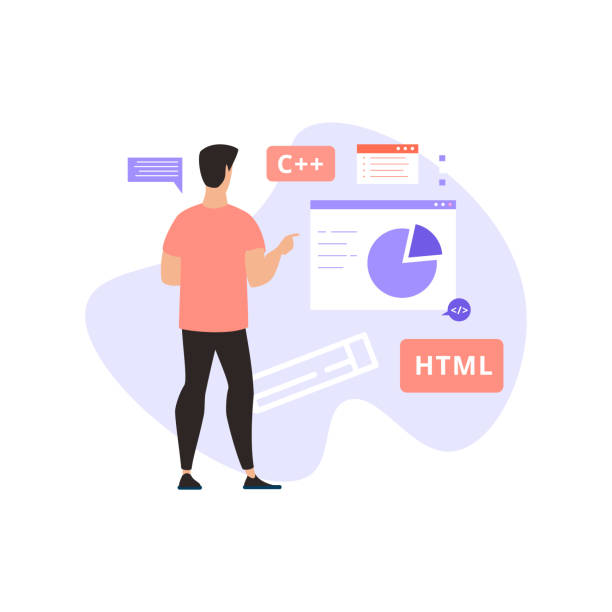
#Personal website design without considering #Search Engine Optimization (SEO) is like building a beautiful shop in the desert; no one will find it.
This specialized chapter teaches you how to use SEO techniques to rank your personal website higher in search results and attract the most visitors.
SEO is divided into two main parts: #On-Page SEO and #Off-Page SEO.
On-Page SEO includes optimizing titles, meta descriptions, keywords, URL structure, heading tags (H1, H2, H3), and content quality within your website.
Identify keywords related to your field of activity and naturally incorporate them into your content.
For example, if you are a graphic designer, keywords like “logo design,” “visual identity,” and “design portfolio” can be useful.
Also, optimize your images with appropriate Alt tags.
Off-Page SEO primarily focuses on #link building (Backlinking) and increasing your website’s authority through external sources.
The more reputable websites that link to you, the higher your ranking in search results will be.
You can attract quality backlinks by participating in other people’s blogs, creating shareable content, and being active on social media.
Website loading speed and responsiveness are also important ranking factors.
By considering these points in designing and building your personal website, you can ensure that your efforts are seen and that target audiences can easily find you.
This process is continuous and requires periodic updates and analysis.
Marketing and Promotion of a Personal Website: How to Get Seen and Attract Audiences?

After completing #personal website design, the next important step is #marketing and promoting it to attract your target audience and get seen.
This informative and news-oriented chapter teaches you effective methods for publishing your website.
#Creating a great website is only half the battle; without marketing, no one will know it exists.
The first step is introducing your website on social media.
Platforms like LinkedIn, Instagram, Twitter, and Facebook can serve as powerful tools for sharing your website link and content.
Regularly publish your new content with relevant hashtags and encourage your followers to visit your website.
Using #email marketing is also very effective.
You can collect an email list of your audience and notify them about the latest updates, new articles, and your projects through regular newsletters.
This method creates a direct connection with your audience and brings them back to your website.
Collaborating with others and #guest blogging on relevant websites is an excellent way to attract new traffic and build quality backlinks, which also helps your SEO.
Participating in online forums and specialized groups related to your field of work, and placing your website link in your email signature and business cards are also simple and effective marketing methods.
By implementing these strategies, your personal website will gradually gain recognition and attract more audiences.
| Marketing Method | Advantages | Key Points |
|---|---|---|
| Social Networks | Access to a wide audience, increased brand awareness | Choosing the right platform, engaging visual content, continuous interaction |
| Email Marketing | Direct and personal communication, high conversion rate | Collecting emails with permission, sending regular newsletters, valuable content |
| Guest Blogging | Increased credibility, backlink acquisition, access to new audiences | Choosing relevant and reputable websites, providing high-quality content |
| SEO (Search Engine Optimization) | Organic and sustainable traffic, increased long-term visibility | Keyword research, optimized content, internal and external link building |
| Podcasts and Videos | Creating deeper connections, diversity in content format | Regular publishing, high production quality, promotion on various platforms |
Measuring Success and Analyzing a Personal Website with Google Analytics

After #designing and launching your personal website, it’s important to measure its performance to make necessary improvements. This analytical chapter shows you how to gauge your website’s success and gain valuable insights using web #analytics tools, especially Google Analytics.
#Google Analytics is a free and powerful tool from Google that provides accurate and comprehensive information about your website visitors.
With this tool, you can monitor key metrics such as #number of visitors (Users), #number of visits (Sessions), #time spent on site (Average Session Duration), #bounce rate (Bounce Rate), and #most visited pages (Page Views).
Reviewing these metrics helps you gain a better understanding of user behavior.
For example, if you have a high bounce rate, it might indicate that your content is not engaging or your website is not loading correctly.
Additionally, Google Analytics allows you to identify your #traffic sources; meaning you can understand where visitors came from: via Google search, social media, referral links, or direct access.
This information helps you optimize your marketing strategies.
Analyzing #visitor demographics (such as age, gender, and interests) can also help in producing more targeted content.
Regular analysis of this data helps you identify your website’s strengths and weaknesses and make data-driven decisions for continuous improvement of your personal website and increase its effectiveness.
Don’t have a corporate website yet and missing out on online opportunities? With professional corporate website design by Rasawb,
✅ Double your business’s credibility
✅ Attract new customers
⚡ Free consultation for your corporate website!
Common Mistakes in Personal Website Design: How to Avoid Them?

In the journey of #personal website design, people often make #mistakes that can harm the website’s effectiveness.
This thought-provoking chapter examines the most common errors and provides solutions to prevent them.
Knowing these mistakes helps you avoid repeating them and have a more professional and efficient website.
One of the biggest mistakes is neglecting responsive design.
In today’s world, where most users connect to the internet via their mobile phones, if your website doesn’t display correctly on mobile, you will lose a large portion of your audience, and your SEO ranking will also decrease.
Your website should provide a smooth and user-friendly experience across all screen sizes.
Another common mistake is #insufficient or low-quality content.
A website lacking content or with repetitive and worthless content is not only unattractive to visitors but also ignored by search engines.
#Lack of SEO optimization is also a major error.
Even if you have the best content, without proper SEO, you won’t be seen.
Don’t forget that #website loading speed is also very important.
Visitors have little patience and will leave slow websites.
Also, some people neglect to provide #clear contact information or appropriate #Call-to-Actions.
Visitors need to know how to contact you or what the next step is.
Another important point is the lack of regular updates to the website and its content.
A stagnant and outdated website damages your credibility.
By recognizing and avoiding these mistakes, your personal website design and development can be much more successful.
Future Trends in Personal Website Design: Always Be One Step Ahead
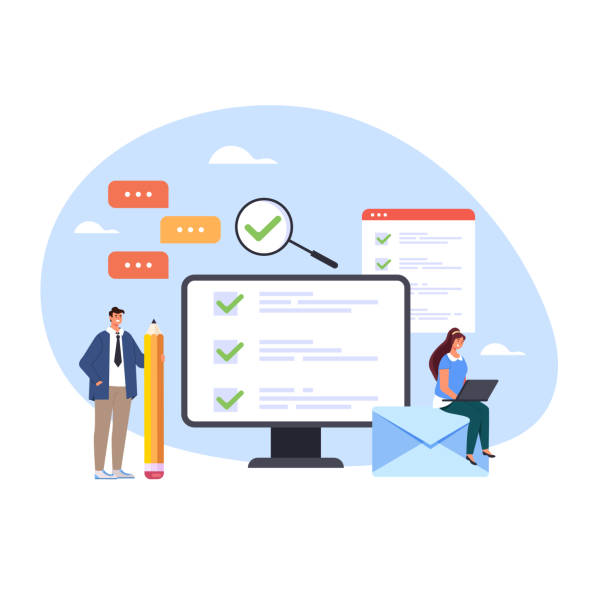
The world of #personal website design is constantly changing and evolving, and keeping up with #new trends is vital to maintaining competitiveness.
This engaging and informative chapter helps you familiarize yourself with the latest technologies and concepts in website design and plan for the future of your personal website.
Always being one step ahead can set you apart from the rest.
One important trend is #personalized user experience.
Websites are gradually becoming smarter and can adjust content based on the user’s browsing history, location, or interests.
This ensures that each visitor has a unique experience.
Artificial intelligence (AI) and #machine learning are also playing an increasing role in optimizing websites, including for SEO improvement, support chatbots, and data analysis.
Mobile-First Design is no longer just a trend, but a standard.
Given the high statistics of mobile phone usage for internet access, your website should be designed for mobile first and then optimized for desktop.
#Subtle animations, #micro-interactions, and #interactive graphics have also become very popular for creating an engaging and dynamic visual experience.
#Website security has also become a more critical concern; using HTTPS, SSL certificates, and regular security updates are essential to protect user data.
By considering these trends in designing and maintaining your personal website, you can have a leading and forward-looking platform that consistently attracts audiences and meets their evolving needs.
Frequently Asked Questions
| Question | Answer |
|---|---|
| 1. Why should we have a personal website? | To showcase skills, resume, portfolios, and create a professional personal brand. |
| 2. What is the first step in designing a personal website? | Defining the main purpose of the website (e.g., displaying portfolio, online resume, personal blog) and the target audience. |
| 3. How important is choosing a suitable domain name? | Very important; the domain name should be relevant to your identity, memorable, and easy to type (e.g., your first and last name). |
| 4. What kind of content should we put on a personal website? | Usually includes “About Me,” “Resume,” “Portfolio,” “Contact Information,” and optionally a “Blog.” |
| 5. What does Responsive Design mean and why is it important? | It means the correct and optimal display of the website on all devices (mobile, tablet, laptop) and is vital for user experience and SEO. |
| 6. What platforms are recommended for building a personal website? | WordPress for greater flexibility and control, or using website builders like Wix or Squarespace for simplicity. |
| 7. How can we improve the SEO of a personal website? | Using relevant keywords, meta descriptions, high-quality and updated content, optimizing images, and loading speed. |
| 8. What are the main challenges in maintaining a personal website? | Regularly updating content and plugins, regular data backups, and monitoring website security. |
| 9. Is programming knowledge required for personal website design? | No, using Content Management Systems (CMS) like WordPress or website builder tools, a personal website can be created without coding. |
| 10. How can we promote and introduce our personal website? | Sharing links on social media, adding links in email signatures, business cards, and resumes, and professional networking. |
And other services of Rasawb Advertising Agency in the field of advertising:
Smart Sales Automation: A specialized service for growth and improving SEO ranking based on precise audience targeting.
Smart Customer Journey Map: A novel service for increasing digital branding through intelligent data analysis.
Smart Direct Marketing: A specialized service for growth and campaign management based on intelligent data analysis.
Smart Brand Identity: A combination of creativity and technology to increase sales through attractive user interface design.
Smart Sales Automation: An effective tool to increase sales with the help of Google Ads management.
And more than hundreds of other services in the field of internet advertising, advertising consultation, and organizational solutions.
Internet Advertising | Advertising Strategy | Advertorials
Resources
Personal Website Design Guide
Online Personal Branding
Website Optimization for Success
Creating Engaging Website Content
? To boost your business in the digital world, Rasawb Afarin Digital Marketing Agency, specializing in responsive website design and providing comprehensive digital marketing solutions, is always by your side to help you reach the peak of success.
📍 Tehran, Mirdamad Street, next to Bank Markazi, Southern Kazeroon Alley, Ramin Alley, No. 6

